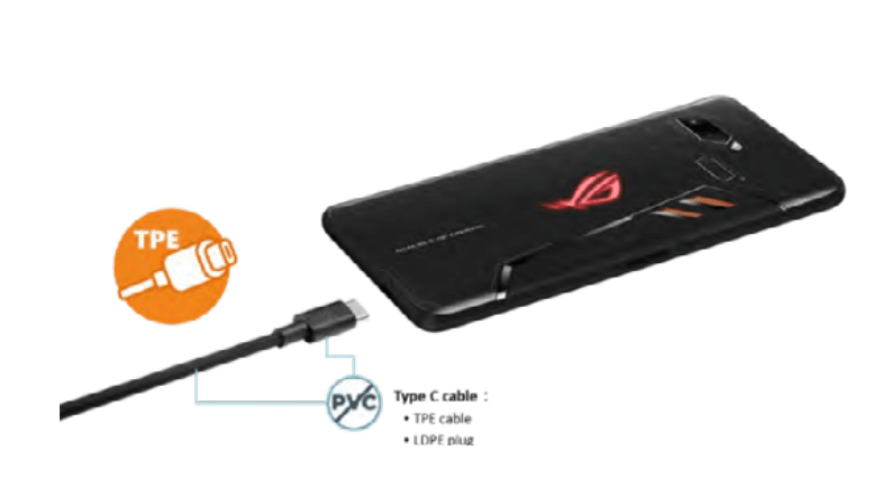Performance
91
%91% of components comply with halogen-free definition by IEC 61249-2-21
PFAS Free
Packaging suppliers must not add perfluoroalkyl and polyfluoroalkyl substances (PFAS) to packaging materials since 2024.
Safer Chemicals
More than 80% of environmental impacts in the product life cycle is determined in the design phase. We believe that integrating the concept of circular economy into the product design phase, introducing environmentally friendly design, and more active management on the use of chemicals in the production process can improve the recycling and reuse of products and substances.
Chemical Substance Management in Products
With the advancement of science, some chemicals that are currently approved or use may be determined as necessary to control in the future, which could interrupt the circularity of the products or components. In addition to compliance with legal regulations, ASUS imposes voluntary control requirements on the restriction and prohibition of hazardous substances. This measure will help the circulation of resources and reduce environmental pollutions at the end of the product's life cycle, and create a safer disposal process to protect the personnel.
ASUS has introduced ISO 9001 Quality Management System since 1999, supplemented by IECQ QC 080000 Hazardous Substance Process Management System Requirements for chemical management. Through the third-party testing laboratory, the onsite audit performed by ASUS personnel, the audit and re-audit of the management system and else, the development of the entire product starts from a truly environmentally friendly design, and we are able to provide consumers with safer products.
Electronic products are complex products that require the addition of various chemical substances to achieve product functionality, quality, or safety in use. To ensure the safety of ASUS products to the environment and users during various stages of manufacturing, transportation, use, and disposal, ASUS has established Hazardous Substances Free (HSF) standard. Since 2002, all products have been in compliance with the Restriction of Hazardous Substances Directive (RoHS) of the European Union. In addition to controlling substances that are prohibited by laws and regulations, we have also follow the requirements of international environmental standards and the electronic industry standard IEC 624741. The substances used in our products have been disclosed and declared in accordance with IEC and legal requirements. Hazardous Substances Free (HSF) standards far surpass international mandatory regulations, By 2023, the number of controlled chemical substances has exceeded 450.

Halogen-Free
It has been confirmed internationally that halogen flame retardants will produce highly toxic dioxin, which is harmful to the environment and human health, if improperly recycled and processed, and halogen-containing parts will also be unable to be reused due to corrosion by halogen acids. The issue of plastic pollution continues to receive attention from all industries. In order to maintain user safety, improve fire resistance characteristics, and achieve recyclability of plastics, ASUS uses scientific evaluation methods (such as GreenScreen) to use flame retardants that are safer for the human body and less harmful to the environment in plastic components of product appearance structures, to enhance the feasibility of material recycling.
Since 2010, ASUS has voluntarily adopted a halogen-free policy. By 2024, ASUS shipped products with components meeting 91% of the halogen-free standard IEC 61249-2-21 set by the International Electrotechnical Commission (IEC).
- 2018: Prohibit the use of chlorine in the bleaching process for paper packaging manufacturing process
- 2019: Transition to halogen-free hard drives and batteries
- 2020: Phase out PVC in the Type-C charging cables for mobile communication products
- 2021: Use halogen-free PCB substrate
- 2024: More than 90% of laptop components do not use halogen flame retardants
- 2030: More than 95% of components are halogen-free
- 2035: Components of major products are 100% comply with halogen-free standards
Management of Packaging Materials
With regard to the packaging materials that come into direct contact with consumers, we require them to meet the EU Directive 94/62/EC on packaging and packaging waste (PPWD).
ASUS actively manages current and future international standards for hazardous substances and reduces the environmental hazardous factors that come in direct contact with humans .
- 2020: Gradually introduced low-VOCs (Volatile Organic Compounds) raw materials in paint and ink
- 2021: Require suppliers not to use mineral oil as printing raw materials, further controled the use of plasticizers (Phthalates), and ban to PVC materials
- 2023: Phase out the use of PAHs (Polycyclic Aromatic Hydrocarbons)
- 2024: Prohibition of PFAS (perfluoroalkyl and polyfluoroalkyl
substances) in packaging materials.

Chemical Substance Management in Manufacturing
In addition to controlling harmful substances in products, ASUS also concerns about whether the materials or auxiliary solvents used in the product manufacturing process pose hidden hazards to production line personnel and the environment. Especially as process chemicals used for cleaning purposes tend to have volatile properties, prolonged exposure of production line personnel to these chemicals may lead to symptoms such as dizziness, headaches, and nausea. In addition to prohibiting the use of benzene and n-hexane in cleaning solvents and degreasing functions during the manufacturing process, ASUS also pays attention to voluntary standards internationally concerning toxic chemical substances encountered in the manufacturing processes of electronic products and keeps monitoring them. These efforts closely align with the principles of the Responsible Business Alliance (RBA) Code of Conduct, which requires companies to provide appropriate personal protective equipment and training for workers, and to ensure that chemicals are classified, stored, used, and disposed of in accordance with safety standards. Moving forward, ASUS will continue to monitor the impact of hazardous substances and explore alternative technologies. A systematic approach will be adopted to expand the assessment of hazardous substances used in manufacturing processes. Step by step, ASUS will implement reduction plans for process chemicals, gradually increasing the number of regulated substances to create a safer and more sustainable production environment.
| Controlled Substances in Manifacturing |
|---|
| 1-Bromopropane(CAS#106-94-5) |
| n-Hexane(CAS#110-54-3) |
| Toluene(CAS#108-88-3) |
| Trichloroethylene(CAS #79-01-6) |
| Dichloromethane (Methylene Chloride) (CAS#75-09-2) |
| Benzene(CAS#71-43-2) |
| Methanol (CAS#67-56-1) |
| N-Methyl-Pyrrolidone (NMP) (CAS #872-50-4) |
| Tetrachloroethylene (CAS #127-18-4) |

